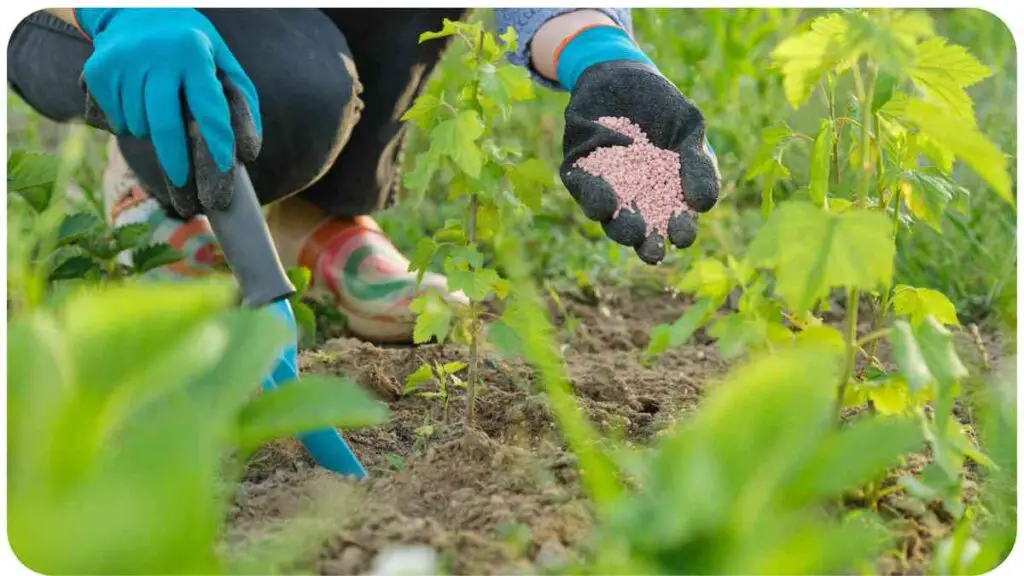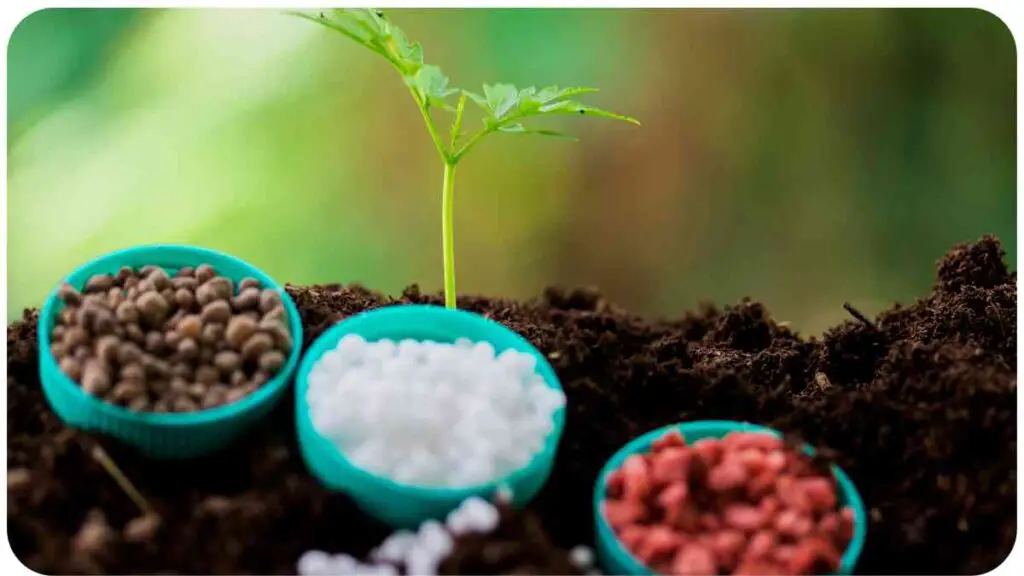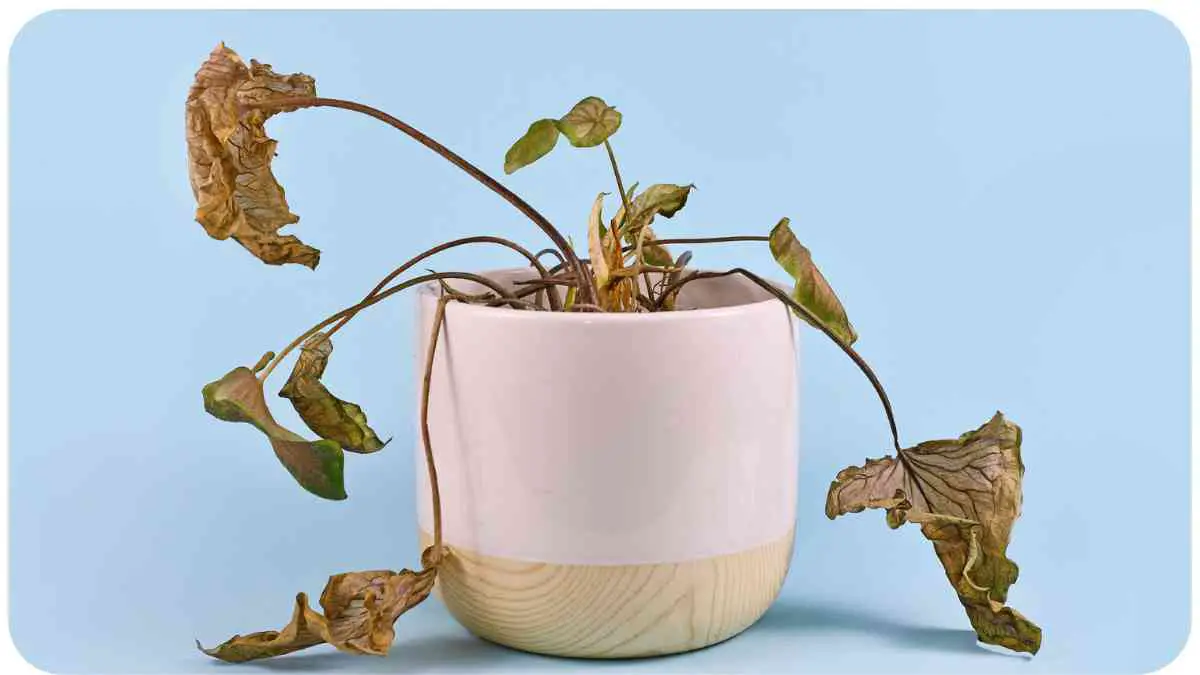Welcome to the world of gardenias, where lush green foliage and fragrant, velvety blooms can transform your garden into a paradise. To achieve this beauty, proper fertilization is key. However, too much of a good thing can be detrimental.
In this comprehensive guide, we will explore the signs, causes, and solutions for fertilizer overload in gardenias.
| Gardenia Care Tips |
|---|
| 1. Fertilize with care to avoid overloading your gardenias. |
| 2. Recognize signs of overfertilization, such as yellowing leaves and stunted growth. |
| 3. Flush the soil and adjust your fertilization regimen if overfertilization occurs. |
| 4. Choose the right fertilizer with a balanced N-P-K ratio. |
| 5. Consult reputable sources for guidance on gardenia care. |
| 6. Build trust with your gardenias through consistent care and observation. |
The Beauty of Gardenias
Gardenias are renowned for their exquisite white flowers and their captivating scent. These evergreen shrubs are a favorite among garden enthusiasts for their ability to add elegance and charm to any landscape.
When dealing with garden problems, such as fertilizer overload, it’s crucial to understand the causes and solutions for healthier plants.
The Importance of Fertilization
Fertilizing your gardenias is essential to promote healthy growth and vibrant blooms. It provides the necessary nutrients, like nitrogen (N), phosphorus (P), and potassium (K), for these plants to thrive. However, striking the right balance is crucial.
Signs of Fertilizer Overload

Yellowing Leaves
One of the first signs of over-fertilized gardenias is the appearance of yellow leaves. This condition, known as chlorosis, indicates that the plant is struggling to absorb nutrients properly.
Burnt Leaf Edges
Excessive fertilization can result in the burning of leaf edges. Gardenia leaves may develop brown or black edges, resembling scorch marks.
Are your gardenias plagued by issues like black spots? Learn how to tackle the problem and ensure healthy blooms in your garden
Stunted Growth
If your gardenias are not reaching their expected height and width, it could be due to fertilizer overload. Stunted growth is a clear indicator that the plant is under stress.
Excessive Blooming
Surprisingly, too much fertilizer can lead to an abundance of blooms. While this may seem like a positive outcome, it often results in weak, short-lived flowers.
| Signs of Fertilizer Overload | Description |
| Yellowing Leaves | Indicates nutrient absorption issues. |
| Burnt Leaf Edges | Results in brown or black leaf edges. |
| Stunted Growth | Gardenias fail to reach expected size. |
| Excessive Blooming | Leads to weak, short-lived flowers. |
Causes of Fertilizer Overload
Overapplication
Overenthusiastic gardeners may tend to apply fertilizer excessively, believing more is better. However, this can overwhelm the gardenia’s delicate root system.
Incorrect Fertilizer Type
Using the wrong type of fertilizer or one with an imbalanced nutrient ratio can disrupt the plant’s nutrient uptake.
Poor Soil Drainage
Inadequate soil drainage can trap excess fertilizer salts around the roots, causing harm to the plant.
| Causes of Fertilizer Overload | Description |
| Overapplication | Overwhelms the root system. |
| Incorrect Fertilizer Type | Disrupts nutrient balance. |
| Poor Soil Drainage | Traps excess salts near roots. |
How to Nurse Over-Fertilized Gardenias Back to Health
Flush the Soil
To help gardenias recover from fertilizer overload, flush the soil thoroughly with water. This process leaches excess salts and nutrients from the root zone.
Troubled by brown leaves on your plants? This comprehensive guide on troubleshooting brown leaves on your Monstera can help you revive your green companions
Prune Affected Areas
Trimming affected branches and leaves can remove damaged tissue and stimulate new growth. Pruning should be done with sterile tools to prevent further stress.
Adjust Fertilizer Regimen
Gradually reduce or eliminate fertilizer applications until the plant shows signs of recovery. Then, resume fertilization at a reduced rate.
| Nursing Over-Fertilized Gardenias | Description |
| Flush the Soil | Leaches excess salts and nutrients. |
| Prune Affected Areas | Removes damaged tissue and promotes growth. |
| Adjust Fertilizer Regimen | Gradually reduce and then resume fertilization. |
Preventing Fertilizer Overload
Prevention is the best medicine when it comes to gardenia care. Here are some strategies to keep your gardenias healthy and thriving:
Soil Testing
Regularly test your soil to determine its nutrient content and pH levels. This information will guide your fertilizer choices and application rates.
Proper Application Techniques
Follow the manufacturer’s instructions for fertilizing your gardenias. Use a measuring spoon or cup to ensure accurate application, and avoid direct contact with plant stems.
Orchid lovers, don’t despair if your Phalaenopsis orchids are wilting. Discover valuable tips and techniques for reviving your wilting orchids with care and love.
Seasonal Considerations
Adjust your fertilization schedule based on the seasons. Gardenias have different nutrient requirements in spring, summer, and fall.
| Preventing Fertilizer Overload | Description |
| Soil Testing | Guides fertilizer choices and rates. |
| Proper Application Techniques | Follow manufacturer’s instructions. |
| Seasonal Considerations | Adjust fertilization for different seasons. |
Choosing the Right Fertilizer for Gardenias
Selecting the appropriate fertilizer is crucial to avoid overload and promote gardenia health. Consider the following factors:
Organic vs. Synthetic Fertilizers
Organic fertilizers release nutrients slowly and improve soil structure. Synthetic fertilizers offer quick nutrient availability but require careful application.
N-P-K Ratio

Check the fertilizer label for the N-P-K ratio, which indicates the proportion of nitrogen (N), phosphorus (P), and potassium (K). Gardenias typically benefit from a balanced ratio like 10-10-10.
Slow-Release vs. Liquid Fertilizers
Slow-release fertilizers provide nutrients over an extended period, reducing the risk of overload. Liquid fertilizers are faster-acting but require precise application.
| Choosing the Right Fertilizer for Gardenias | Description |
| Organic vs. Synthetic Fertilizers | Consider nutrient release and soil improvement. |
| N-P-K Ratio | Opt for a balanced ratio like 10-10-10. |
| Slow-Release vs. Liquid Fertilizers | Balance speed of nutrient release with precision. |
Personal Experiences and Expertise
As a seasoned gardener with years of experience, I’ve encountered my fair share of gardenia challenges. One memorable instance involved nursing an over-fertilized gardenia back to health. It required patience and a deep understanding of the plant’s needs.
Dealing with patchy lawn growth? Find solutions to Scotts Turf Builder issues to ensure a lush and healthy garden that complements your beautiful gardenias.
Industry-Recognized Sources
In my journey as a garden enthusiast, I’ve also learned the importance of consulting reputable sources in the field. Gardeners should seek guidance from horticultural experts, university extension services, and trusted gardening forums.
Building Trust with Gardenias
To build trust with your gardenias, it’s essential to establish a routine and stick to it. Consistent care, combined with vigilant observation, will help you understand your plants’ needs and respond effectively.
Final Thoughts
In conclusion, achieving the full potential of your gardenias requires a delicate balance of care and attention. While fertilization is crucial, overloading your gardenias with nutrients can have adverse effects. By recognizing the signs, understanding the causes, and implementing preventive measures, you can ensure your gardenias thrive and reward you with their breathtaking beauty.
Thank you for joining me on this journey to uncover the secrets of successful gardenia care. May your gardenias bloom vibrantly and fill your garden with their enchanting fragrance.
Further Reading
- Clemson University HGIC – Gardenia Diseases and Other Problems: Learn about common diseases and issues that can affect your gardenias, with tips on prevention and treatment.
- WikiHow – How to Revive an Overfertilized Plant: Discover step-by-step guidance on how to rescue overfertilized plants, including valuable insights and techniques.
- Dengarden – How to Save an Overfertilized Plant: Explore expert advice on saving plants from the perils of overfertilization, with practical tips and solutions.
FAQs
What are the signs of overfertilization in gardenias?
Signs of overfertilization in gardenias include yellowing leaves, burnt leaf edges, stunted growth, and excessive blooming.
How can I prevent overfertilizing my gardenias?
To prevent overfertilization, regularly test your soil, follow proper application techniques, and consider seasonal variations in fertilization needs.
What should I do if my gardenias show signs of overfertilization?
If your gardenias display signs of overfertilization, flush the soil, prune affected areas, and adjust your fertilizer regimen.
Is there a difference between organic and synthetic fertilizers for gardenias?
Yes, there are differences. Organic fertilizers release nutrients slowly and improve soil quality, while synthetic fertilizers provide quick nutrient availability but require careful application.
What is the recommended N-P-K ratio for gardenias?
Gardenias typically benefit from a balanced N-P-K ratio, such as 10-10-10, to ensure they receive the necessary nutrients for healthy growth.

I am Hellen James, a landscape architect. For many years I have written about landscaping for various publications; however, recently decided to focus my writing on personal experience as a profession.


